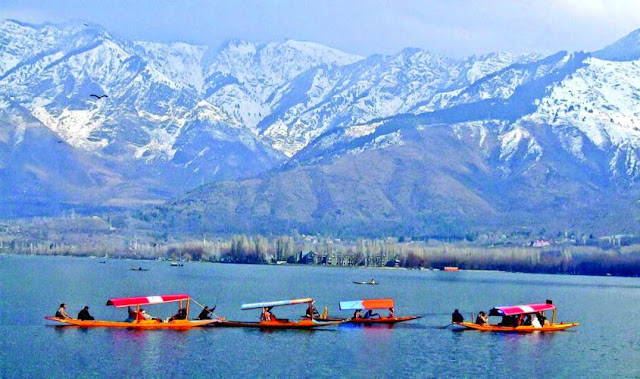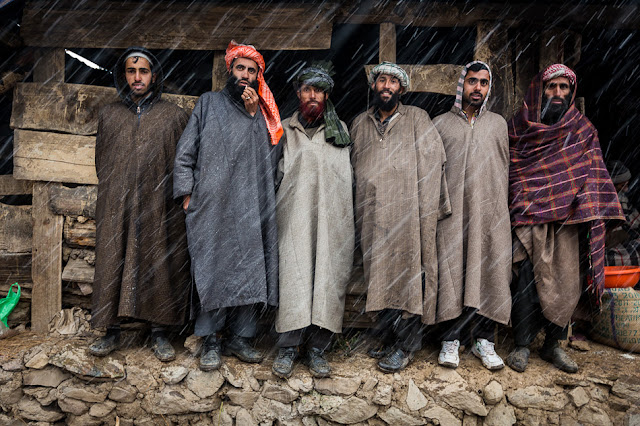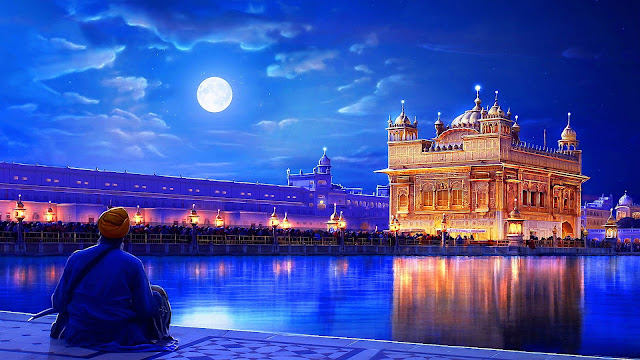Jammu & Kashmir Traditional Wear
Traditional Wear JAMMU & KASHMIR
Jammu and Kashmir is the jeweled crown of India with its extravagant beauty. It presents the distinction of multifaceted, variegated and unique cultural blend, making it distinct from the rest of the country, not only from the different cultural forms and heritage but from geographical, ethical, social entities, forming a distinct spectrum of diversity and diversions.
Dal Lekh Shikara
Clothing of Jammu and Kashmir is unique in the whole Indian Sub-Continent as it comes from various cultural backgrounds shows the tradition of and culture of the state as per the existing weather conditions. These costumes have exceptional embroidery works. The weather of this state mostly remains cool and chilly so its influence can be seen among costumes as well. The history of this region also states that it was influenced by Aryan descendants and planned with a number of civilizations such as popular Persians, Romans, and Greeks. These cultural attributes reflect in the attires of inhabitants.
There exist a mixture of Persian, Roman and Indian style in the clothing of Kashmiri people used in latest movie in BAJARANGI BHAI JAAN or too many Indian movies
There exist a mixture of Persian, Roman and Indian style in the clothing of Kashmiri people used in latest movie in BAJARANGI BHAI JAAN or too many Indian movies
Fabric / Yarns Using These Fabrics.
Most of the costumes are made of cotton, silk, and wool. Moreover, complicated embroideries are used to design the clothing. Poots and Pheran is the most famous dress both for men and women. It demonstrates plenty of embroideries. With Mughal type turban, headgear, Tauranga belt of Pashmina and colored scarf.
Dressing Of Kashmiri Women
The Kashmiri women are the most beautiful in India. They have any English rosiness of complexion behind the Eastern tan. The color of their hair ranges from golden red to brunette and that of eyes from green, blue, grey to black.
The Pheran is the prominent attire for Kashmiri women. The Pheran wore by women usually has Zari, embroidery on the hemline, around pockets and mostly on the collar area. Ladies prefer the suit and Burgha in summer and Pheran are preferred in autumn.
Pheran
The Pherans worn by the Muslim women are traditionally characterized by their broad sleeves and reach up to the knees. Elaborate Zari embroideries or floral patterns around the neck and the pockets are a prominent feature of a Muslim woman`s Pheran. With Brocade patterns adorn their long sleeves. The Pherans are wrapped tightly by a piece of creased cloth called Lungi or Pashmina shawl.
Headgears
They wear a head-gear that looks very distinctive from the Tauranga. The head-gear is in red color, they tie it around their forehead like a turban and they also use trinkets and silver pins to tie it tightly. The traditional head-gears are made of fine wool and are thick keeping the people warm in the extremities of winter climate in Kashmir.
They wear a head-gear that looks very distinctive from the Tauranga. The head-gear is in red color, they tie it around their forehead like a turban and they also use trinkets and silver pins to tie it tightly. The traditional head-gears are made of fine wool and are thick keeping the people warm in the extremities of winter climate in Kashmir.
The red head-gear was known as the Kasaba and Abaya. It is worn by the Muslim women as a part of their regular attire, and the Abaya is also commonly worn by them.
The Muslim girls who are unmarried, wear the skullcaps which are decorated with the embroidery made by gold thread and ornament it by using trinkets, pendants, and amulets.
The Muslim girls who are unmarried, wear the skullcaps which are decorated with the embroidery made by gold thread and ornament it by using trinkets, pendants, and amulets.
Jewellery
The Muslim women are quite fond of wearing a bunch of earrings. Silver jewelry is popular among the Muslim women and they adorn themselves with neckpieces, bracelets, and heavily jeweled chains.
The Muslim women are quite fond of wearing a bunch of earrings. Silver jewelry is popular among the Muslim women and they adorn themselves with neckpieces, bracelets, and heavily jeweled chains.
Women prefer vibrant colors often pair up there dresses with traditional Kashmiri jewelry you can see few examples in movie ROCKSTAR
Dressing of Kashmiri Men
Kashmiri – Men Pheran
The typical dress of a Kashmiris man both Hindu and Muslim is Pheran, a long loose gown hanging down below the knees. The men wear a skullcap, a close-fitting shalwar (Muslims) or churidar pajama (Pandits).
The traditional Hindu male garment pheran is always plain and has narrow sleeves and a left side breast-open collar with a kind of lapel or lace emerging from it.
The Pheran is a loosely fitted woolen garment which makes use of the Kangri. The Kangri is an earthen vessel which is filled with flaming coal. The Pathani Suit, also referred to as Khan-dress, is popular among the Muslim men, especially in Srinagar.
Turbans for Muslim Men
Turbans are common among Muslim men. Skull caps are prevalent, especially among the peasants and the Karakuli. Fur skull caps with the Pashmina shawls worn by men often symbolize royal lineage. The Muslim men wear lace-free shoes known as Gurgabis
Headgear for Hindu Male
The turban is the traditional headgear of the Kashmiri Pandit males, though its use is very restricted now. This turban is not much different from the turban the Muslims wear except that the Pandits do not wear any scalp cap inside. The priest class among the Pandits would wear their turbans in almost the Namdhari Sikh style.
The turban is the traditional headgear of the Kashmiri Pandit males, though its use is very restricted now. This turban is not much different from the turban the Muslims wear except that the Pandits do not wear any scalp cap inside. The priest class among the Pandits would wear their turbans in almost the Namdhari Sikh style.
The traditional headwear of kashmiri men is call pehran you can see in this picture
Dogras-Jammu
Dogras are tribes residing amidst the hilly topography of Jammu. These people are the existence of the Aryans which normally wear the woolen of grey color and pajamas which are loose in fitting. They also wear the Kamarband or waist belt. Dogras women wear a loose tunic, dupatta, choodidaar salwar and also a cap, which makes their personality charming. Similar Dogara Men wear fitted pajamas and kurtas of considerable length. The use of kamarband and turban are prominent among the Dogra elders.
Dogras are tribes residing amidst the hilly topography of Jammu. These people are the existence of the Aryans which normally wear the woolen of grey color and pajamas which are loose in fitting. They also wear the Kamarband or waist belt. Dogras women wear a loose tunic, dupatta, choodidaar salwar and also a cap, which makes their personality charming. Similar Dogara Men wear fitted pajamas and kurtas of considerable length. The use of kamarband and turban are prominent among the Dogra elders.
The traditional dress of Jammu & Kashmir also includes the delicate Cashmere wool products and Kashmiri Shawls. These Shawls are popular in the world for the elegant material and exotic embroidery applied on them. The most precious of them are the Shawls prepared with Pashmina Wool which is also combined with the rabbit fur. Pashmina wool is obtained from the native Ibex that lives on the high altitude of 14,000 ft.
Pashmina shawl is a must for every kashmiri people of kashmiri also gift these swals during wedding times
Morden Fashion
It has been observed that over the years, the people of Jammu and Kashmir have adopted the dressing styles and habits of the west as well as those of other regional Indian cultures. However, there has been a revival in recent years as pherans have become part of modern fashion, and are worn by females of other areas of India as well
This is noticed primarily among the men who have appropriated the western attire to a great extent. Kashmiri men are also wearing the pheran as a fashionable outfit. Combined with jeans, the pheran has made its way into the office world. The modern person is not as wide and long as the traditional ankle or knee length versions and sometimes have side slits. Fewer men are wearing the pheran with a shalwar.
The saree gained popularity among the Hindu women after the 1930s Reform Movement. The Kashmiri youth adapting the western style prefer jeans and shirt. However, despite these influences, the traditional Pheran continues to remain the symbol of the culture and couture of fashion in Jammu and Kashmir.
Thanks : Jagdish Kumar
Thanks : Jagdish Kumar








What an amazing post about traditional dress of kashmir. All outfits are looking so amazing and every ladies want to try these outfit once.
ReplyDelete